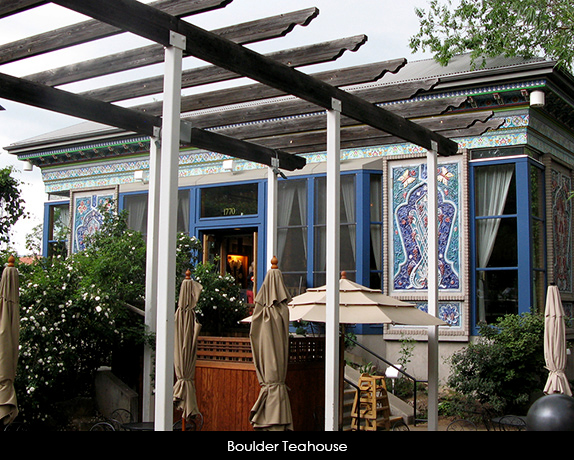
In Boulder, Colorado, the Dushanbe Teahouse, popularly referred to simply as “the teahouse,” is a well-loved meeting place. The restaurant overlooks an offshoot of Boulder Creek, running high in early summer (teahouses in Tajikistan are traditionally set on riverbanks). A luxuriant rose garden fronts the structure. On Saturday mornings the city’s wonderful grower’s market, complete with food stalls, sets up nearby. But the real draw is the building’s unique architecture. It was brought from Boulder’s sister city of Dushanbe, the capital of Tajikistan, in 1987.
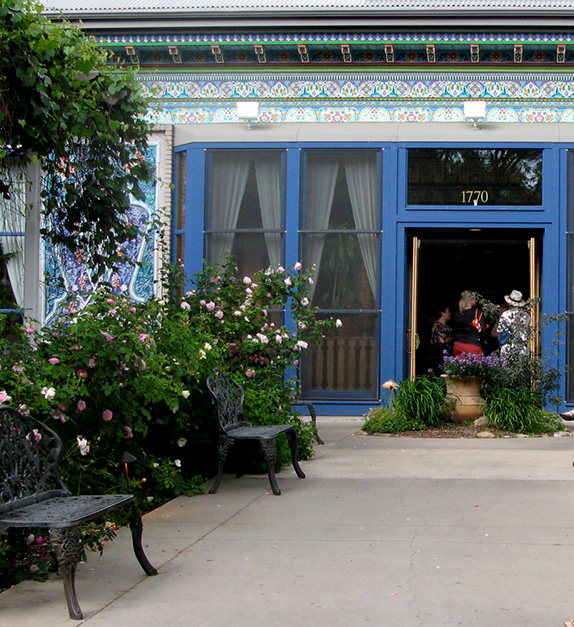
A small country in Central Asia and a former member of the Soviet Republic, Tajikistan sits along the famous Silk Road, the trade route that for centuries brought silks, spices and much else from Asia to the Middle East. Teas were among the most sought after Silk Road commodities, and tea is not only sustenance but community in many of the world’s cultures.
The architecture and decorative elements of this teahouse reflect centuries old Persian design motifs. Persia today is Iran, a country whose millennial art has been attacked and in many cases destroyed by modern warfare (much of it waged by the US). Forty artisans created the teahouse’s hand carved and hand painted ceiling, plaster carved walls, columns, and external ceramic panels—all of which offer a glimpse into the artistically lavish Persian Empire.
The teahouse was built in Tajikistan over a period of two years and then taken apart, crated, and shipped to Boulder in 200 crates—where specialists who accompanied it reassembled it piece by piece. This didn’t happen right away though, or devoid of problems. Reassembly was expensive and time-consuming. The pieces of the teahouse remained in their crates for a decade. Former Boulder mayor Linda Jourgensen and a number of city council members kept the project alive. Thousands of dollars were raised through private donations. Finally, the Boulder-Dushanbe Teahouse Trust was established. The building and grounds are property of the City of Boulder. The current restaurant operator is Lenny Martinelli.
On today’s map, Tajikistan (population about seven and a half million) is bordered to the east by China, to the north by Uzbekistan and Kyrgystan, and to the south by Afghanistan. We rarely hear about any of the “stans” but the latter, and not precisely because of its tea culture. In fact, decades of Soviet and US war in that country have destroyed much of what was unique and beautiful.
More than ninety percent of Tajikistan’s territory is mountainous, with almost half the republic above 9,000 feet. Great contrasts in temperatures exist between alpine and lowland areas. Wildlife is extremely varied, and includes the elusive and endangered snow leopard.

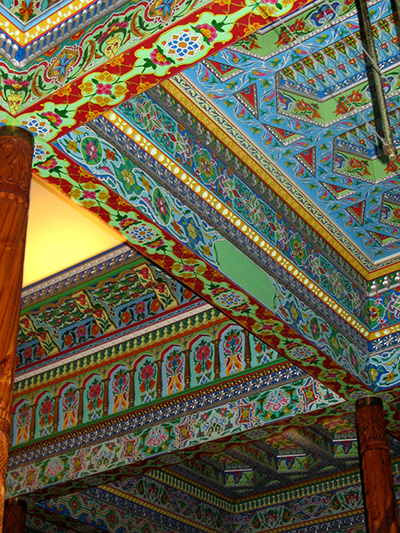
The Boulder Teahouse’s paintings and carved panels demonstrate the ancient art called Persian Ganch. Each panel is composed of a number of tiles that when put together create a whole. Geometric design is everywhere. Kodir Rhakimov’s oil paintings, on display throughout the building, combine contemporary-style Soviet pictorial art with the ancient mediums of the Persian Empire. The building’s exterior features eight panels by Victor Zabolotnikov. They depict a stylized version of the “Tree of Life.” Each of these panels was sculpted in Tajikistan, cut into smaller tiles, fired, and then carefully packed for their trip to Boulder.
Perhaps the most beautiful part of the Teahouse is its ceiling. It is intricate and compelling. It too was built, carved and painted in Tajikistan. No power tools were used in the confection of any part of this building. The work was handcrafted exactly as it would have been centuries earlier. Supporting the ceiling are 12 cedar columns, also part of the original gift. No two are alike.
A pool anchors the building’s interior, and it contains seven hammered copper sculptures created by Tajikistan artist Ivan Milosovich. These sculptures are life-size and based on a 12th century poem, “The Seven Beauties,” by Nizami Ganjavi. The poem chronicles the adventures of Shah Bahram Goir, who married the seven daughters of the continents. When he visits each, she tells him a story from her native land. All these tales are closely related to popular folklore themes of honesty, virtue and kindness, while denouncing arrogance, greed, and treachery. Such themes never go out of style.
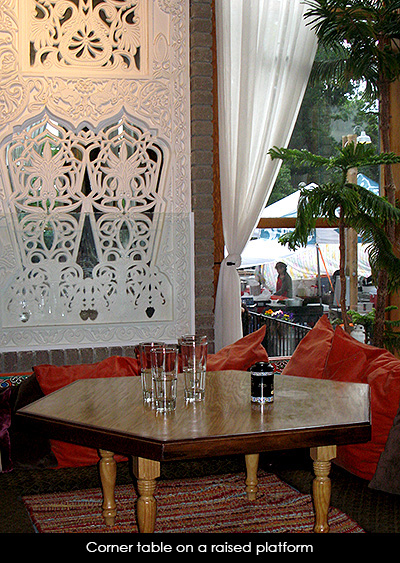
In Central Asia, teahouses are places where the community gathers and socialize over a cup of tea. The Boulder version is a privately owned restaurant that serves breakfast, lunch, dinner, and afternoon tea. It is always full. Reservations are recommended, although walk-ins are welcome and invited to wait for their tables on benches set among the rose garden in front.
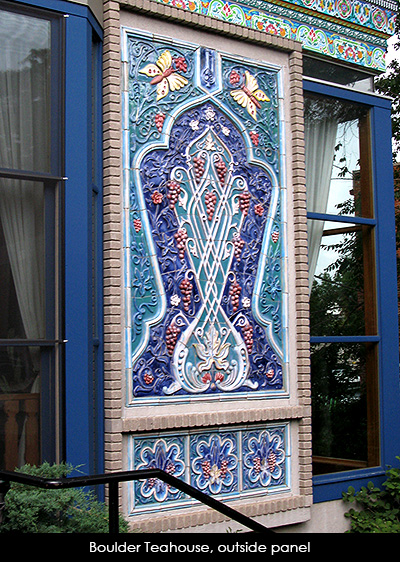
The first time I visited the Boulder Teahouse, the menu was largely Middle Eastern. Today the establishment serves an eclectic range of ethnic cuisines from a variety of countries. The atmosphere is what draws people to this place, but the food doesn’t disappoint. The tea menu consists of over 100 premium loose-leaf teas; many are created by the teahouse’s own tea blender. Special tea parties can also be arranged for adults or children. Catering services are available.
When in Boulder, the Teahouse is a must visit. Enjoying a meal there, or a cup of tea, provides welcome respite from the busyness of our overextended lives.




Responses to “Friday Voyage: The Dushanbe Teahouse”